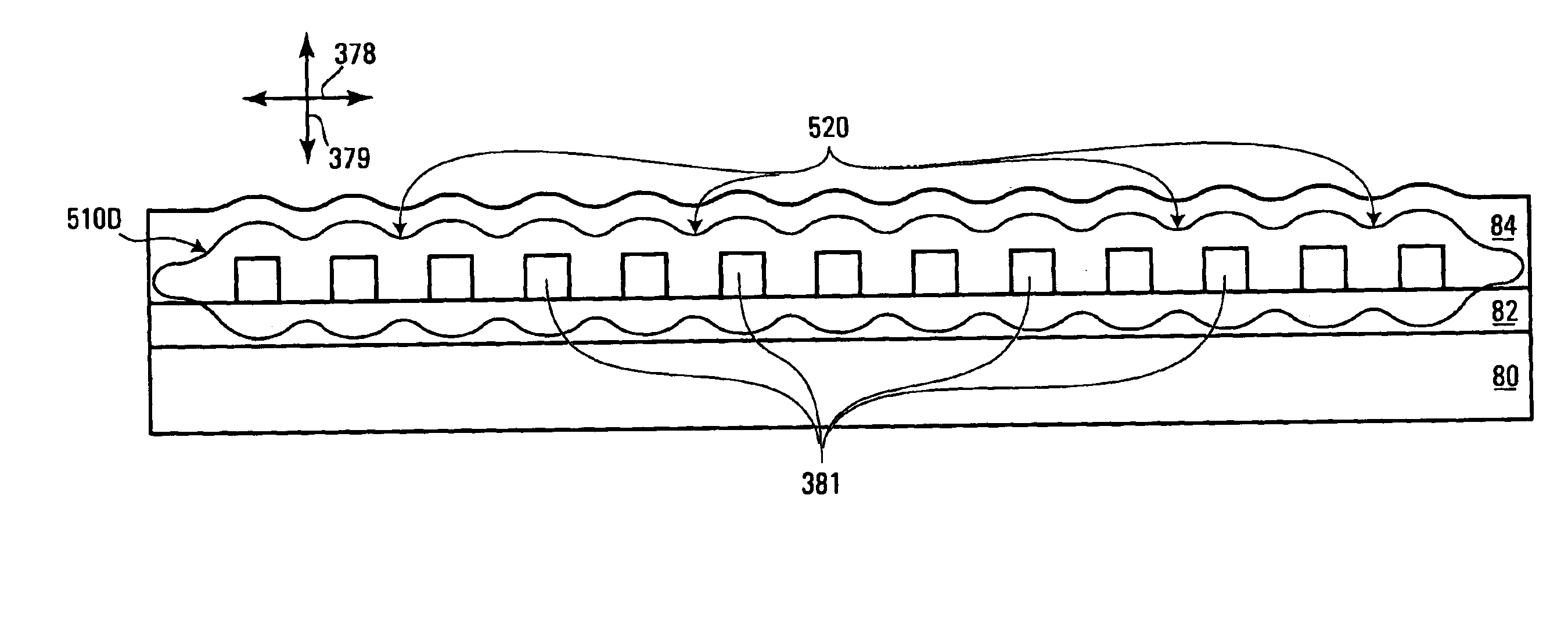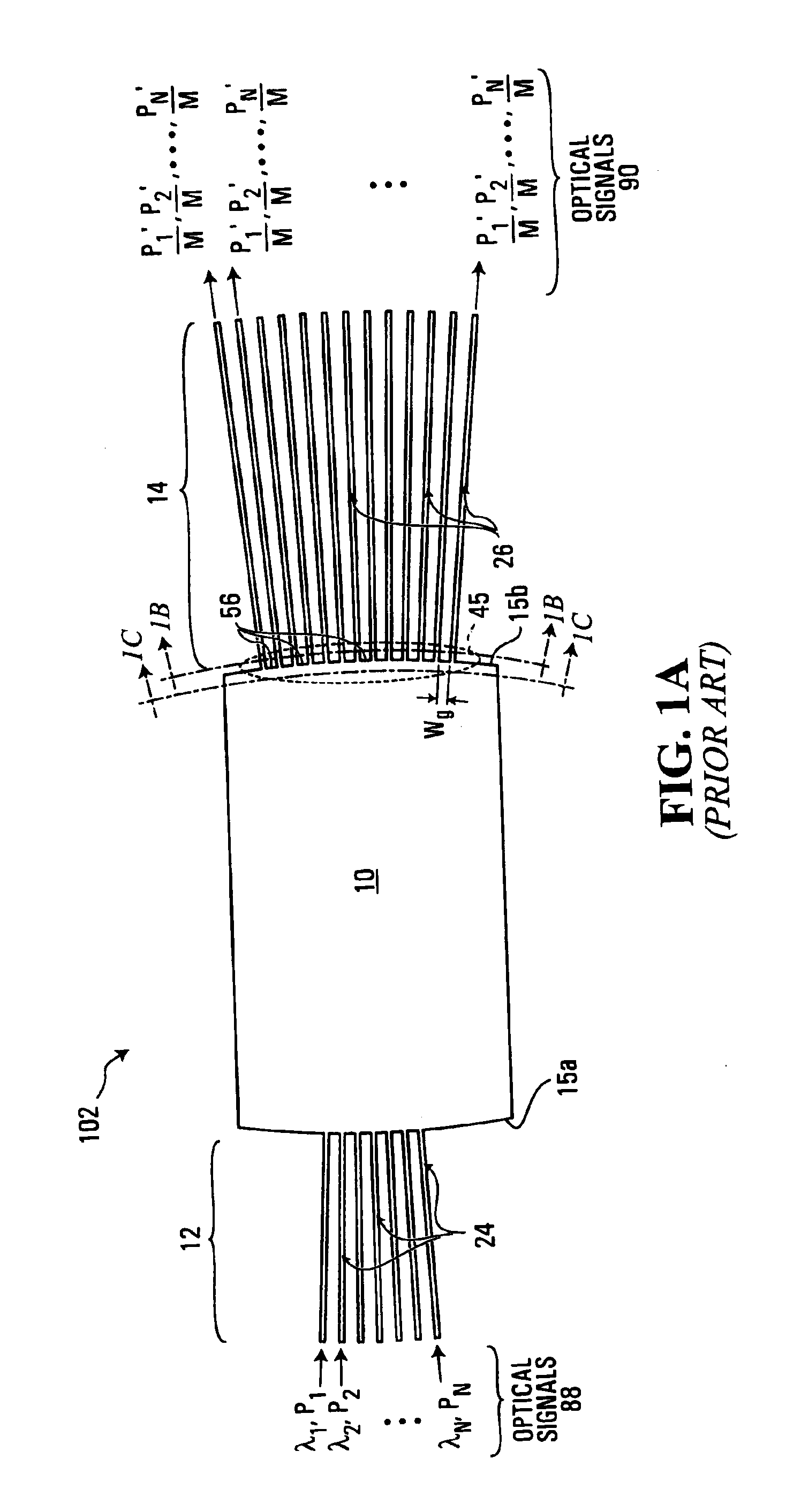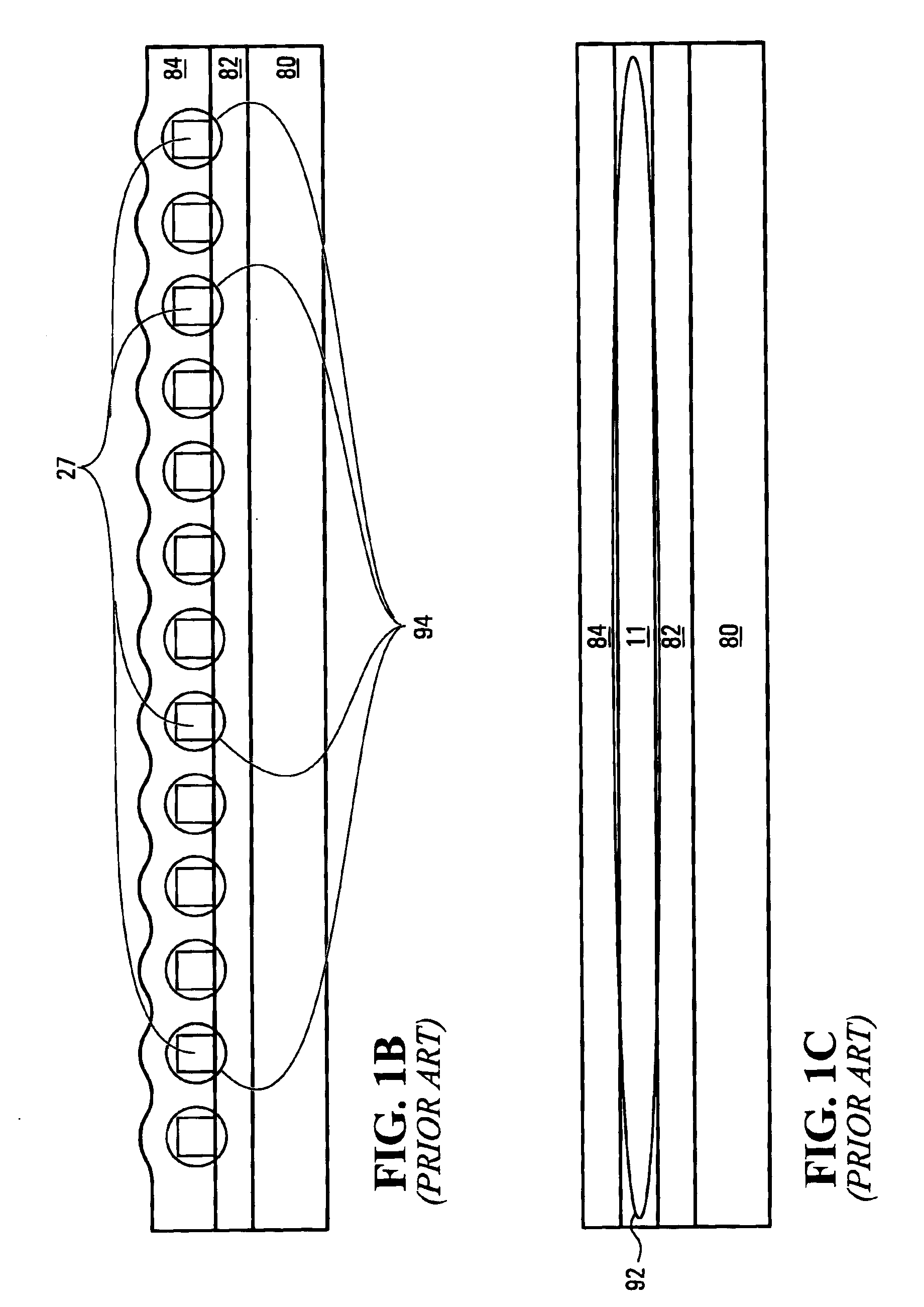Optical coupling arrangement having low coupling loss and high production yield
a coupling arrangement and low coupling loss technology, applied in the field of optical coupling arrangements, can solve the problems of reducing the insertion loss of these devices, increasing the fraction of devices fabricated which must be discarded due to defects, and reducing the size of these structural features, so as to reduce the effective width of the gap, reduce the effective width, and reduce the effect of tapering
- Summary
- Abstract
- Description
- Claims
- Application Information
AI Technical Summary
Benefits of technology
Problems solved by technology
Method used
Image
Examples
Embodiment Construction
[0038]Referring to FIG. 3A shown is a top view of an example star coupler according to one embodiment of the invention. The star coupler is generally indicated by 301 and has a first coupling waveguide, shown as slab waveguide 310, with preferably circularly curved ends 315a and 315b. In FIG. 3C, a cross-sectional view of the optical coupler 301 through the slab waveguide 310 shows a core 311 of the slab waveguide 310 located between layers 82 and 84 of under-cladding and top-cladding, respectively. Referring back to FIG. 3A, there is a first array 314 of first waveguides 326 and a second array 312 of second waveguides 324 at curved end 315a. A first transition region 332 has first and second ends 357 and 358, respectively, and is adjacent the slab waveguide 310. A second transition region 322 is located between the first transition region 332 and the first array 314.
[0039]The first transition region 332 has a plurality of first transverse segments 360 of a core material, and a plur...
PUM
 Login to View More
Login to View More Abstract
Description
Claims
Application Information
 Login to View More
Login to View More - R&D
- Intellectual Property
- Life Sciences
- Materials
- Tech Scout
- Unparalleled Data Quality
- Higher Quality Content
- 60% Fewer Hallucinations
Browse by: Latest US Patents, China's latest patents, Technical Efficacy Thesaurus, Application Domain, Technology Topic, Popular Technical Reports.
© 2025 PatSnap. All rights reserved.Legal|Privacy policy|Modern Slavery Act Transparency Statement|Sitemap|About US| Contact US: help@patsnap.com



